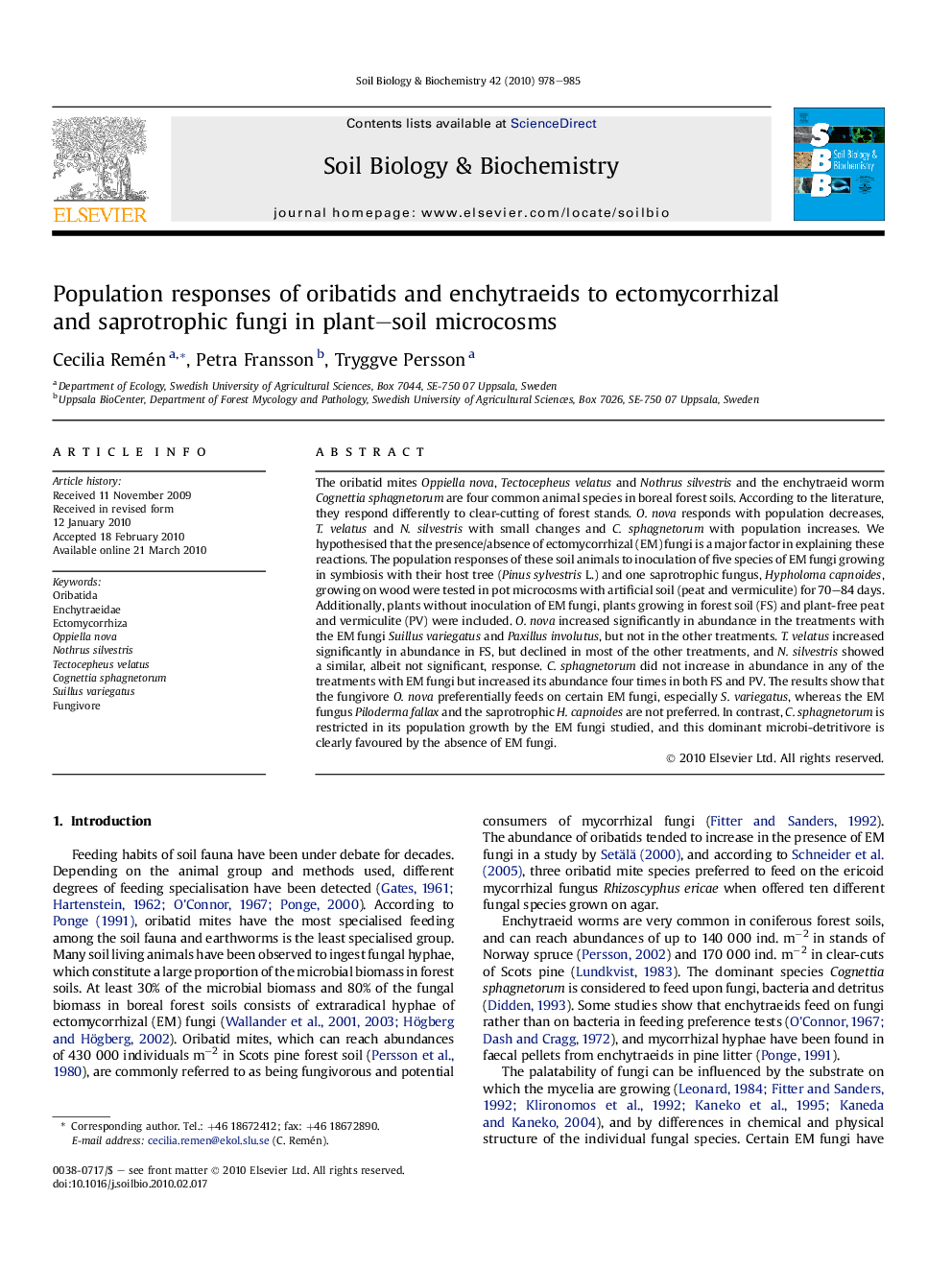| کد مقاله | کد نشریه | سال انتشار | مقاله انگلیسی | نسخه تمام متن |
|---|---|---|---|---|
| 2025693 | 1070006 | 2010 | 8 صفحه PDF | دانلود رایگان |

The oribatid mites Oppiella nova, Tectocepheus velatus and Nothrus silvestris and the enchytraeid worm Cognettia sphagnetorum are four common animal species in boreal forest soils. According to the literature, they respond differently to clear-cutting of forest stands. O. nova responds with population decreases, T. velatus and N. silvestris with small changes and C. sphagnetorum with population increases. We hypothesised that the presence/absence of ectomycorrhizal (EM) fungi is a major factor in explaining these reactions. The population responses of these soil animals to inoculation of five species of EM fungi growing in symbiosis with their host tree (Pinus sylvestris L.) and one saprotrophic fungus, Hypholoma capnoides, growing on wood were tested in pot microcosms with artificial soil (peat and vermiculite) for 70–84 days. Additionally, plants without inoculation of EM fungi, plants growing in forest soil (FS) and plant-free peat and vermiculite (PV) were included. O. nova increased significantly in abundance in the treatments with the EM fungi Suillus variegatus and Paxillus involutus, but not in the other treatments. T. velatus increased significantly in abundance in FS, but declined in most of the other treatments, and N. silvestris showed a similar, albeit not significant, response. C. sphagnetorum did not increase in abundance in any of the treatments with EM fungi but increased its abundance four times in both FS and PV. The results show that the fungivore O. nova preferentially feeds on certain EM fungi, especially S. variegatus, whereas the EM fungus Piloderma fallax and the saprotrophic H. capnoides are not preferred. In contrast, C. sphagnetorum is restricted in its population growth by the EM fungi studied, and this dominant microbi-detritivore is clearly favoured by the absence of EM fungi.
Journal: Soil Biology and Biochemistry - Volume 42, Issue 6, June 2010, Pages 978–985